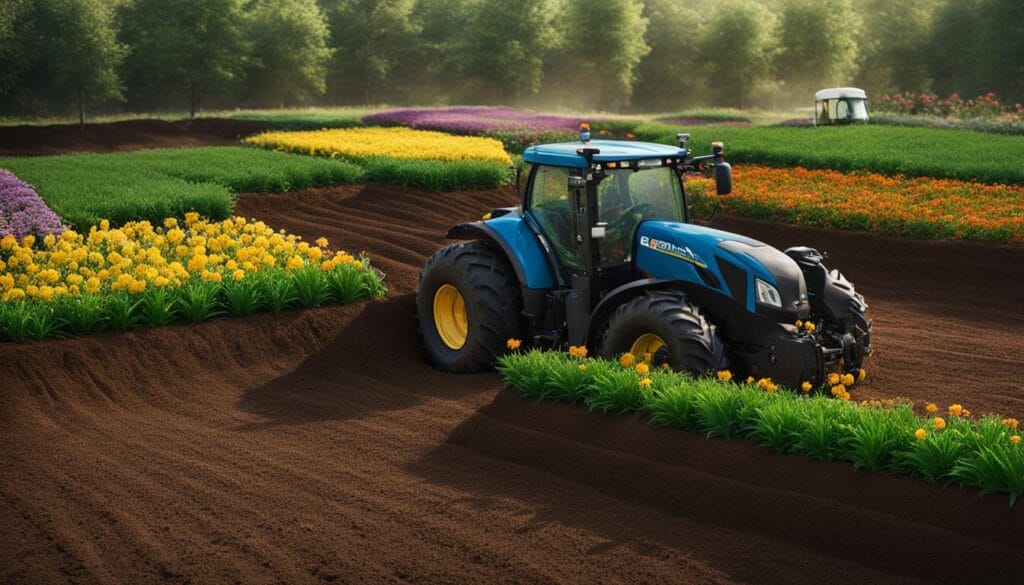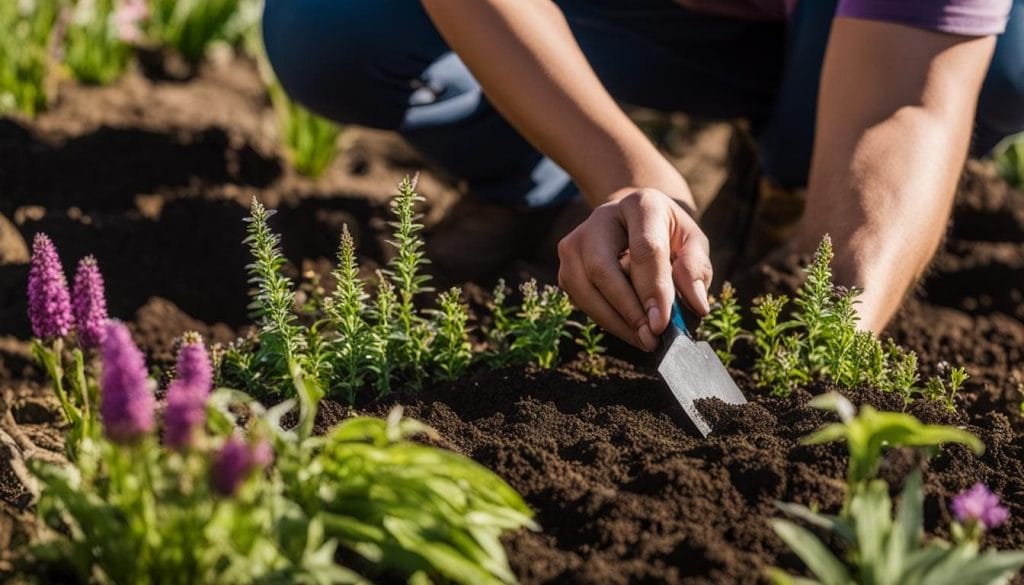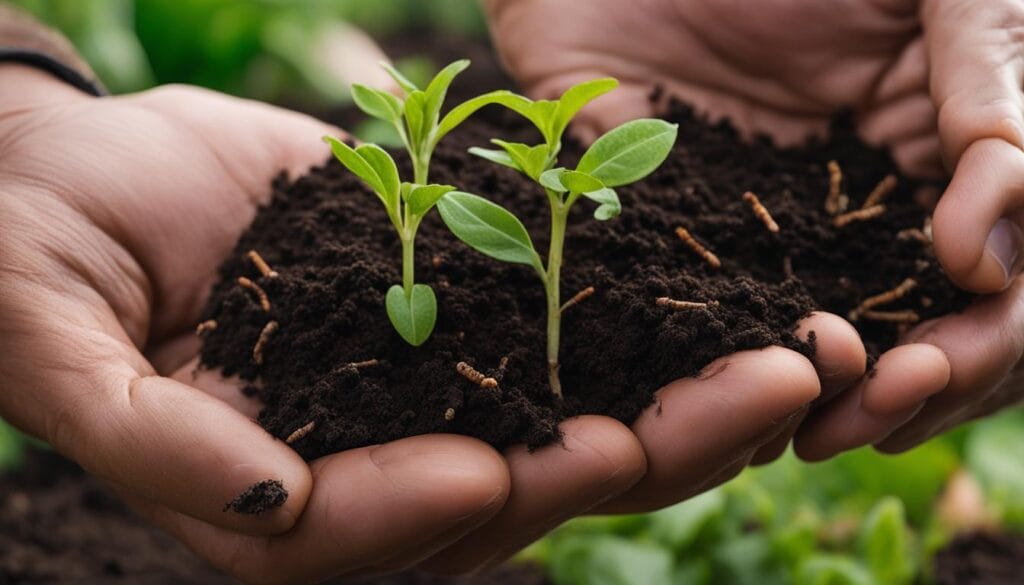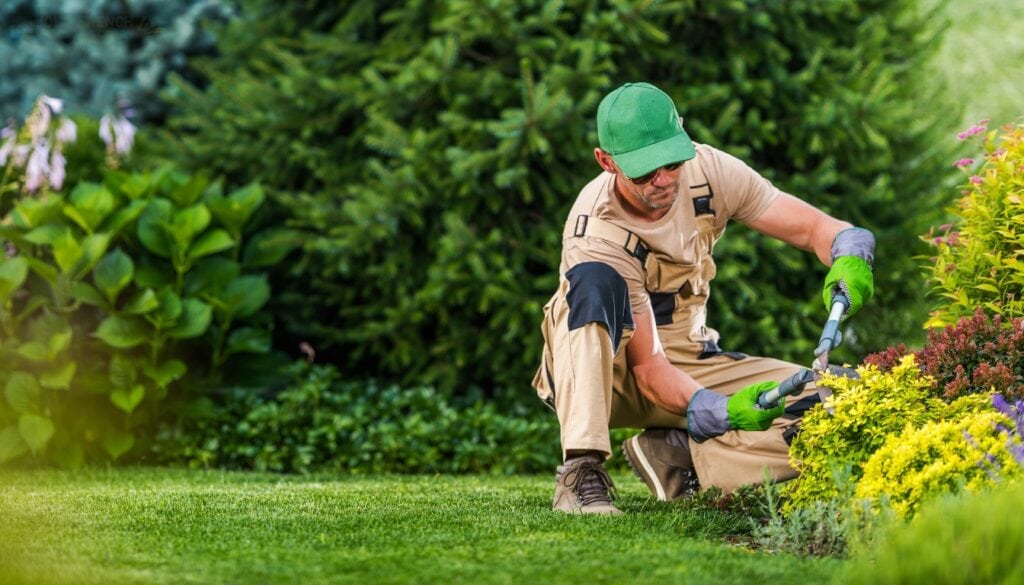Are you looking to transform your landscape into a thriving oasis? Look no further! In this article, we will explore innovative soil techniques for landscaping that can help you create a sustainable and beautiful garden. From soil improvement methods to advanced landscaping strategies, we will cover it all. So, let’s dive in and unlock the secrets to a stunning landscape!
Key Takeaways:
- Incorporating regenerative gardening practices can lead to a sustainable and thriving landscape.
- Building healthy soil structure through composting and organic matter is essential for successful landscaping.
- Taking a no-till approach helps maintain soil structure and promotes a healthy soil ecosystem.
- Planting native perennials supports the local ecosystem and creates a low-maintenance garden.
- Reusing materials in your yard reduces waste and adds visual interest to your landscape.
Building Healthy Soil Structure
When it comes to successful landscaping, one of the key elements to consider is building a healthy soil structure. By implementing advanced soil management techniques, you can create an environment that promotes the growth and vitality of your plants. These innovative soil solutions not only ensure the health and longevity of your landscape but also contribute to a sustainable and thriving ecosystem.
One effective method for improving soil structure is by adding compost to your garden. Compost provides essential nutrients to the soil, increases water retention, and minimizes soil erosion. By incorporating organic matter from your own garden into the soil, you create a nutrient-rich environment that supports the growth of plants. It’s a simple yet powerful way to enhance the health and fertility of your landscape.
Another soil improvement method is utilizing cover crops. Cover crops are planted during the off-season to protect and nourish the soil. They help prevent erosion, suppress weeds, and add organic matter when they are eventually tilled into the soil. Cover crops not only improve soil structure but also contribute to long-term soil health by enhancing its nutrient and water-holding capacity.
In addition to compost and cover crops, incorporating beneficial microorganisms into the soil can further enhance its structure. These microorganisms, such as mycorrhizal fungi, form symbiotic relationships with the plant roots, assisting in nutrient uptake and soil aggregation. By promoting a diverse and thriving microbial community, you create a soil environment that supports the optimal growth of your plants.
| Soil Improvement Method | Benefits |
|---|---|
| Adding compost | Provides essential nutrients, increases water retention, minimizes soil erosion |
| Utilizing cover crops | Prevents erosion, suppresses weeds, adds organic matter to the soil |
| Incorporating beneficial microorganisms | Enhances nutrient uptake, improves soil aggregation |
By implementing these innovative soil solutions, you can create a thriving landscape that not only looks beautiful but also supports the long-term health and sustainability of your garden. Building a healthy soil structure is the foundation for successful landscaping and ensures that your plants have the necessary nutrients and support to flourish.
Quote:
“Improving soil structure is like building a strong foundation for your landscape. By incorporating compost, cover crops, and beneficial microorganisms, you create an environment where plants can thrive and contribute to a sustainable ecosystem.”
Taking a No-Till Approach
In regenerative gardening, taking a no-till approach is a fundamental technique that contributes to the health and vitality of your soil. By avoiding excessive digging or disturbing the soil, you preserve the intricate network of roots and soil microbes that play a crucial role in nutrient uptake and water retention for plants. This cutting-edge soil technique promotes a healthy soil ecosystem and maintains soil structure, allowing your landscape to thrive.
Instead of tilling the soil, consider using mulch as a natural and effective alternative. Mulch not only suppresses weeds but also helps to retain moisture, keeping your plants adequately hydrated. It acts as a protective layer, preventing soil erosion and temperature fluctuations, which can be detrimental to the health of your garden. By embracing the no-till approach and incorporating mulch into your landscaping, you are providing your plants with the ideal conditions for growth.
Implementing the no-till technique also has environmental benefits. It reduces carbon emissions and minimizes soil compaction. Additionally, avoiding excessive soil disturbance helps to prevent the loss of valuable nutrients and prevents the disruption of the delicate soil structure. By prioritizing the health of the soil through the no-till approach, you contribute to sustainable and innovative soil solutions in your garden.

Advantages of the No-Till Approach:
- Promotes a healthy soil ecosystem
- Maintains soil structure
- Reduces soil erosion
- Retains moisture in the soil
- Minimizes carbon emissions
- Prevents nutrient loss
- Contributes to sustainable gardening practices
Expert Quote:
“The no-till approach is a game-changer in regenerative gardening. By minimizing soil disturbance, we can create a thriving soil ecosystem that supports the growth and health of our plants.” – Garden Expert
| Soil Amendment Techniques | Description |
|---|---|
| Cover Cropping | Planting specific crops to improve soil fertility, prevent erosion, and suppress weeds. |
| Composting | Creating nutrient-rich compost from organic materials to enhance soil fertility and structure. |
| Sheet Mulching | Layering organic materials and compost over the soil to smother weeds, retain moisture, and improve soil quality. |
| Vermicomposting | Using worms to break down organic waste materials into nutrient-rich compost. |
By incorporating the no-till approach and utilizing soil amendment techniques, you can create a flourishing landscape that is both environmentally friendly and visually stunning. Embrace these innovative soil manipulation techniques and witness the transformative power they have on your garden.
Planting Native Perennials
One of the key aspects of sustainable landscaping practices is planting native perennials. Native plants are well-suited to the local climate and soil conditions, making them more resilient and low-maintenance. They have adapted over time to thrive in their specific environment, which means they require less water, fertilizer, and pesticides compared to non-native species. By incorporating native perennials into your landscape, you can create a beautiful and sustainable garden that supports the local ecosystem.
Native plants also play a crucial role in promoting biodiversity. They provide food and habitat for local wildlife, such as birds, butterflies, and bees. By including a variety of native plants in your garden, you can attract a diverse range of beneficial insects and pollinators, which in turn helps to maintain a healthy ecosystem. Additionally, native plants can help reduce the spread of invasive species, as they are well-adapted to compete with them for resources.
Benefits of Planting Native Perennials:
- Low-maintenance: Native perennials are adapted to the local environment, requiring less water and maintenance compared to non-native species.
- Biodiversity: Native plants attract a variety of wildlife and beneficial insects, promoting ecosystem health and diversity.
- Water conservation: Native plants have deep roots that help improve water infiltration and reduce runoff, conserving water in your garden.
- Pesticide reduction: Native plants are typically more resistant to pests and diseases, reducing the need for chemical pesticides.
- Beautiful aesthetics: Native perennials offer a wide range of colors, textures, and shapes, allowing you to create visually stunning landscapes.
“Native perennials are an essential component of sustainable landscaping practices, providing numerous benefits for both the environment and your garden. By choosing native plants, you can create a beautiful and thriving landscape while reducing your ecological footprint and promoting biodiversity.” – Landscaping expert

Innovative Soil Techniques: Reusing Materials in Your Yard
When it comes to creating a sustainable and thriving landscape, regenerative gardening emphasizes the importance of not only building healthy soil structure, taking a no-till approach, and planting native perennials but also reusing materials in your yard. By repurposing yard debris and other materials, you can minimize waste and add visual interest to your landscape while aligning with regenerative gardening principles.
Instead of discarding twigs and sticks, consider using them to create fences or garden borders. Not only does this provide a natural and rustic look to your yard, but it also helps define different areas and adds structure to your landscaping. Fallen logs can also be put to good use by stacking them to create privacy areas or even using them as unique garden furniture pieces. This way, you give new life to these materials and reduce the need for synthetic alternatives.
| Materials | Usage |
|---|---|
| Twigs and sticks | Create fences or garden borders |
| Fallen logs | Stack to create privacy areas or use as garden furniture |
By reusing materials, you not only contribute to a more sustainable landscape but also inspire creativity and offer a unique touch to your yard. Plus, it’s an opportunity to involve the entire family in DIY projects and enjoy the process together.
So, next time you’re working in your yard, think twice before throwing away those natural materials. Give them a second life and let your imagination run wild. Your sustainable and innovative landscape will surely be the envy of the neighborhood!
Conclusion
Embrace the power of regenerative gardening to revitalize your Australian oasis today! By implementing innovative soil techniques for landscaping, you can create a sustainable and thriving landscape.
Building healthy soil structure is crucial for successful landscaping. Add compost to your garden to provide essential nutrients, increase water retention, and minimize soil erosion. Feeding the soil with organic matter from your own garden creates a nutrient-rich environment for plants to thrive.
Take a no-till approach by avoiding digging or disturbing the soil. This helps maintain soil structure and promotes a healthy soil ecosystem. Instead, use mulch to suppress weeds and retain moisture, ensuring your garden remains vibrant and flourishing.
Planting native perennials is another vital aspect of regenerative gardening. These plants, adapted to the local climate and soil conditions, offer resilience and low-maintenance, while also supporting the local ecosystem and promoting biodiversity.
Additionally, consider reusing materials in your yard to reduce waste and enhance your landscape. Twigs and sticks can be repurposed as fences or garden borders, while logs from felled trees can create privacy areas or be used as furniture. These practices align with sustainable landscaping, promoting environmental stewardship.
Embracing innovative soil techniques, advanced soil management, and sustainable landscaping practices will transform your Australian oasis into a flourishing and environmentally-friendly haven. Start your regenerative gardening journey today!
FAQ
What are regenerative gardening practices?
Regenerative gardening practices focus on building healthy soil structure, taking a no-till approach, and planting native perennials. These practices promote sustainability and biodiversity in landscaping.
Why is healthy soil structure important for successful landscaping?
Healthy soil structure is crucial for a thriving landscape as it provides nutrients and water retention for plants. It also promotes a healthy soil ecosystem and minimizes soil erosion.
What does it mean to take a no-till approach?
Taking a no-till approach means avoiding digging or disturbing the soil. This maintains soil structure and supports the complex network of roots and soil microbes that help plants access nutrients and water.
Why should I plant native perennials in my garden?
Planting native perennials is beneficial as they have adapted to the local climate and soil conditions, making them resilient and low-maintenance. They also support local wildlife and promote biodiversity.
How can I reuse materials in my yard?
Reusing materials in your yard reduces waste and adds visual interest to your landscape. Twigs and sticks can be used for fences or garden borders, while logs can be stacked for privacy areas or used as furniture.



